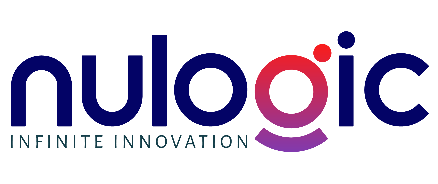The word Blockchain should be nothing new to you, as it has been associated with the bitcoin and cryptocurrency craze.
To a greater or lesser extent, you know that it is the technology that underpins the major cryptocurrencies or is behind the bitcoin registries.
And perhaps, like many of us, that’s the information we know about blockchain technology.
Many who don’t quite share the euphoria of cryptocurrencies and non fungible tokens (NFT), have come to stigmatize the Blockchain, associating it with something unstable or insecure And nothing could be further from the truth!
The first thing we would like to reveal in this article is that the applications of Blockchain technology go far beyond cryptocurrencies.
It is a technology with the potential to revolutionize the internet as we know it, logistics systems, logging, tracking and data encryption; and year by year more applications of the Blockchain are unveiled.
Today at NU Technology we tackle 5 aspects about the Blockchain that you probably didn’t know.
La web 3.0 promete ser el nuevo internet y se basa en los registros distribuidos, conoce todo lo que hay que saber sobre la Web 3.0 y sus beneficios.
The role of the Blockchain so far

When we make a physical purchase through a point of sale (POS) we rely on payment platforms offered by operators such as Visa or Mastercard.
In fact, fund transfers and typical payments in today’s financial system use intermediaries such as banks or issuers to support transactions, and their platforms to enable the exchange of funds.
The Blockchain fulfills that role for Bitcoin and goes beyond; it allows consumers and suppliers to connect directly, eliminating the need for a third party.
According to the World Economic Forum the Blockchain cryptography brings security to BTC exchanges and provides “a decentralized database” or “digital ledger” of transactions that network participants can check, but never modify.
How does the blockchain operate?
The most elementary term in a blockchain is the “hash.”
A hash is a string of numbers and letters with a fixed length, created by a mathematical function called a “hash function”.
To get an idea, the hash function takes a variable amount of characters like your name and encrypts it, turning it into a random string of digits of fixed length.
The smallest movement within the Blockchain generates a hash, an encrypted code.
Hashes are “recursive,” meaning that a newly generated hash depends on the previous chain of records or hashes.
To make the cryptography a bit more complex, each hash is closed with a “Nonce” or pseudo-random one-time-use code.
Its function is to serve as an audit or post-mortem of the main hash.
A “block” or “block” within the chain will contain a finite number of hashes, all interlocked together.
They are recorded in the order in which they occur and remember that a hash is encoded based on the previous one.
The network and the Blockchain registry
The finite chain of hashes or “blockchains” is spread over a network of hundreds or thousands of computers with particular characteristics connected in different parts of the world.
Each specially adapted terminal or computer, as explained by Deloitte, is a “node” in the network.
Each new hash must be verified and approved by the nodes and each node backs a copy of the “electronic ledger” or Blockchain.
Whenever a significant majority of nodes validate the new hash, the transaction is approved and the code or hash is added to the block.
The “blockchain” record is basically the ledger or spreadsheet containing a finite number of “hashed” blocks, where each one represents a transaction.
And it doesn’t end there.
The blockchain is updated or generates “a lock”, so to speak, every 10 minutes automatically, that record is backed up to all terminals on the network instantaneously.
Here’s a look at what you need to know today about cryptocurrency in e-commerce.
The records of the Blockchain network are public.
Can you access a bank’s intranet to appreciate the number of transactions occurring at a certain time, the amount and who is sending to whom? Not that we know of!
Here another interesting fact about the Blockchain, the Blockchain records are public and you or I can see them, at least some information.

Just access the official website of the Blockchain, (https://www.Blockchain.com/btc/blocks) and see the recent hashes verified by the network of nodes.
You will see that each hash has a chain numbering called “height” and this because the blocks are approved in a linear and chronological way. As of the date of editing this post the block height is on the order of 749,000.
You can become a node in the Blockchain network.
And if you wish you can turn a high performance hardware, not your pc, into a node and connect to the Blockchain computer network.
You will receive a copy of the colossal number of transactions or record of the Blockchain and enable the necessary software for the validation of each hash.
But it’s not easy!
In the case of Bitcoin there are millions of terminals connected to the network and each one has a copy of the identical Blockchain.
That network dissemination helps to make the information more difficult to manipulate, any hacker or hacker will have to gain access to each encrypted terminal to manipulate the blockchain and it is a really unlikely event.
This is what is meant by Blockchain as a “distributed ledger“.
It’s time for a concept about Blockchain
And this is the concept about Blockchain formulated by experts such as Price Waterhouse Cooper:
A blockchain is a decentralized ledger of all transactions through a peer-to-peer (peer-to-peer) network.Using this technology, participants can verify transa ctions without the need for a central clearing authority.
And this is IBM’s definition of blockchain:
Blockchain is a shared, immutable ledger that facilitates the process of recording transactions and tracking assets in an enterprise network.
As you may still have some doubts, let’s continue to unveil interesting facts about the Blockchain and how it works.
By the way, should your eCommerce accept cryptocurrencies?
The Blockchain and mining
We know that blockchain technology supports BTC, it allows information to be recorded and shared but not edited.
Today there are millions of people in the world who own Bitcoins or fractions of them. Let’s say someone wants to pay for a product or service with Bitcoins, here the Blockchain is activated.
In this dimension there is no correspondent bank, or a Visa or Master network that centrally validates the transaction.
Its validation is “decentralized” and anyone can participate in the game.
Let’s go back to the Bitcoin purchase, a hash is generated and thousands of terminals, although we would say millions, in network “compete” to validate the transaction.
These powerful and specially adapted terminals or hardware run the validation program and try to solve the complex mathematical code, which we call hash.
If a terminal solves the hash by “hashing” the block (called hashing the Block) its work will also validate the transactions in the block.
Powerful terminals compete in this work.
When the hash is validated or resolved the completed transaction is publicly recorded and stored as a block on the Blockchain, at which point it becomes unalterable.
In the case of Bitcoin, and most other blockchains, powerful terminals that successfully verify blocks are rewarded for their work with payment via cryptocurrencies.
This is commonly referred to as “mining” and the verification equipment or terminal as “mining equipment”.
The Blockchain is not born with BTC

Blockchain encryption technology was first described in 1991 by Stuart Haber and W. Scott Stornetta, two Bellcore researchers who wanted to implement a system where the timestamps of documents could not be manipulated.
Only two decades later, with the public launch of Bitcoin in January 2009, the Blockchain had its first application.
Bitcoin is known as a “cryptocurrency” because its protocol is based on the blockchain.
In a research work or whitepaper presenting the digital currency (the Bitcoin white paper), its creator under the pseudonym Satoshi Nakamoto, conceptualized BTC as:
“A new electronic cash system that is completely peer-to-peer, without a trusted third party”.
Which by all accounts is founded on the definition of the blockchain.
To conclude
This is how blockchain works, how it originated and how it is that it has been linked to the world’s leading cryptocurrency.
Its operation has captivated executives at Barclays, Citi, Deutsche Bank, BBVA; even Mark Zuckerberg, Richard Branson, Bill Gates, Elon Musk and others in Silicon Valley; who hope to give other applications to this encryption technology.
We hope this brief installment has cleared at least a little bit of the picture about the Blockchain.
One of our purposes is to encourage you to continue researching and deepening your knowledge on the subject.
Do you have any questions or comments?
If you need any service in IT infrastructure – Cloud, support or development for your eCommerce or business the experts at NU Technology are here to offer you value.


